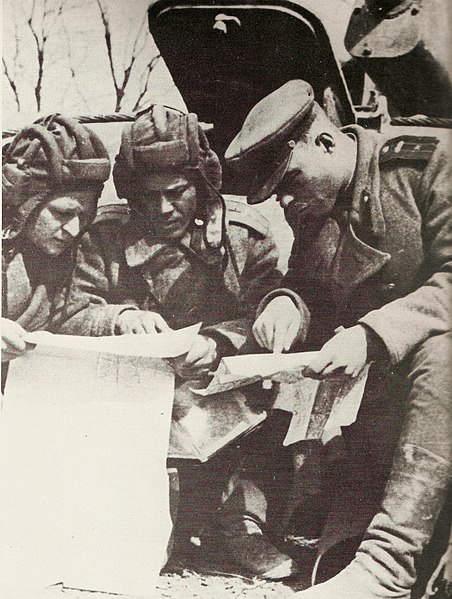The SU-76 was a Soviet light self-propelled gun used during and after World War II. The SU-76 was based on a lengthened version of the T-70 light tank chassis and armed with the ZIS-3 mod. 1942 76-mm divisional field gun. Developed under the leadership of chief designer S.A. Ginzburg (1900–1943). Its quite simple construction and multipurpose combat role made it the second most produced Soviet armored fighting vehicle of World War II, after the T-34 medium tank.
SU-76M light self-propelled gun in the Memorial Complex "Gorky citizens in the Great Patriotic War", Nizhny Novgorod Kremlin, Russia
Soviet tank troops (Battle of Budapest, October 1944).
Su-76M in the streets of Budapest during the 1956 uprising.
SU-76M in the Mount Sapun Museum Memorial Complex, Sevastopol.
The T-70 is a light tank used by the Red Army during World War II, replacing both the T-60 scout tank for reconnaissance and the T-50 light infantry tank for infantry support. The T-80 light tank was a more advanced version of the T-70 with a two-man turret—it was produced only in very small numbers when light tank production was abandoned. The T-90 self-propelled anti-aircraft gun was a prototype vehicle with twin machine guns, based on the T-70 chassis.
T-70 at the technical museum in Togliatti
Model T-70 in Velikiy Novgorod
Rear view of the T-70 at the Parola Tank Museum
Image: Танк Т 70 (Мелитополь, 2018)








